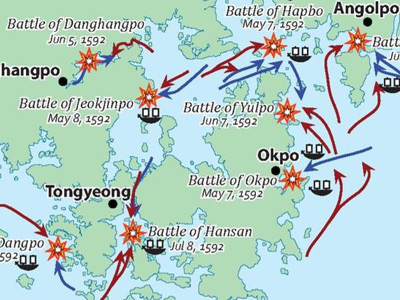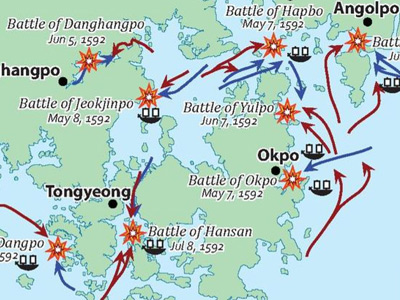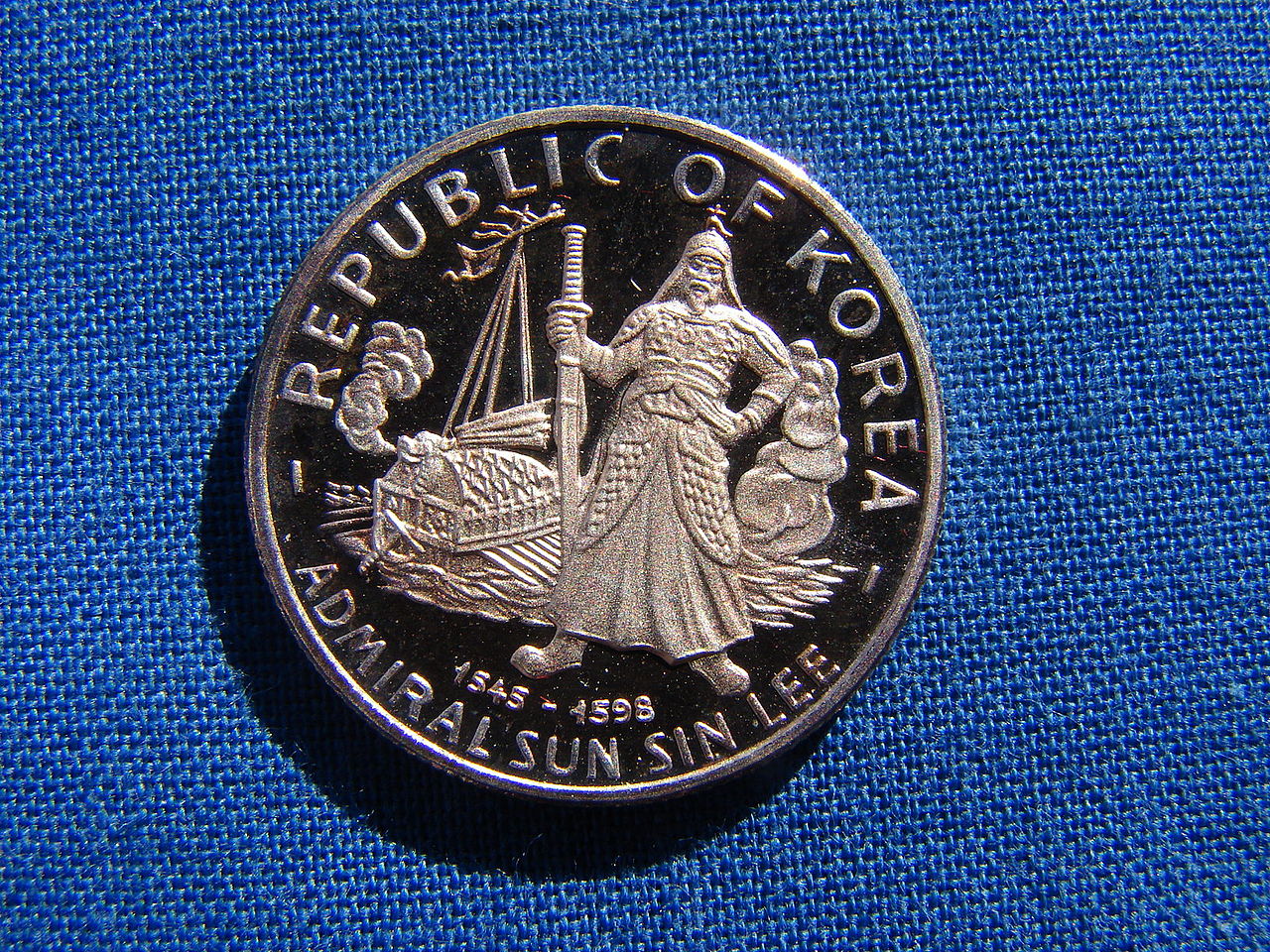Battle of Myeongnyang (1597)

Technical Notes
Chain or iron rope across the strait
There are claims that Yi had iron ropes tightened across the channel between Japanese fleet groups, which severely dampened the Japanese numerical advantage.
Unique hydrodynamic conditions
The unique tidal conditions of the strait, which Admiral Yi was careful to study beforehand, affected the Japanese in several ways. The Japanese were not incompetent sailors however, and also were not unaware of nor inexperienced in sailing in rough tides as similar conditions existed in Japan. They counted on the rapid tides of the strait and their numerical advantages to break through the Korean line. This turned out to be a miscalculation.
When attacking the Koreans, the Japanese did so in smaller groups. The Japanese could not advance all their ships into the channel at the same time; although the current was moving north, it was still unpredictable, with isolated eddies and whirlpools, and sending a mass of ships into the channel would cause them to collide with each other.
Secondly, when the current reversed and flowed south at the end of three hours, the Japanese ships not only drifted away from the battle, but could not maneuver and ended up colliding with each other even if they avoided the eddy problems. This is probably the major reason why there were so many damaged Japanese ships.
Lastly, the rough currents of Myeongnyang made it difficult for anybody who fell overboard or jumped from sinking or burning ships to swim to shore; most of the Japanese in the water ended up drowning.
Advertisement

These books are available for download with iBooks on your Mac or iOS device, and with iTunes on your computer. Books can be read with iBooks on your Mac or iOS device.

These books are available for download with iBooks on your Mac or iOS device, and with iTunes on your computer. Books can be read with iBooks on your Mac or iOS device.
( Click image to enlarge)
Estimates for strength
The primary sources for number of ships and men involved are from Yi Sun-sin and his nephew Yi Pun, in his biography on his famous uncle. In his war diary, Admiral Yi specifically mentions "at least 200 enemy ships" and "133 enemy warships." Yi Pun echoes these numbers and adds the detail that refugees viewing the battle from the hills above counted 333 Japanese ships then "stopped counting." It is unclear whether this is intended to suggest that the Japanese fleet was substantially larger than the 333 ships counted, or whether the refugees stopped counting because that was the size of the Japanese fleet and there were no more Japanese ships to count.
An enlisted soldier, Chun, who had been captured by the Japanese forces and escaped, testified that there were 120 ships in the battle.
For Korean numbers the most recent and accurate source is a letter from Yi Sun-sin to the Ming general Ma Gui where he states, "I have 13 warships and 32 hyeopseon (협선)." Hyeopseon means "narrow ship" and was primarily used for scouting. It is speculated that these were ships given to Yi by local fisherman and not actively used in the battle. According to Todo, 13 Joseon ships were standing in the middle of the strait.
Estimates for casualties and losses
According to Todo, half of his subordinate officers were killed or wounded during the battle.
Also, a prisoner who had been captured by Japanese forces and escaped also testified that half of the Japanese soldiers were killed or wounded during the battle.
The count of 30 Japanese ships rammed during the later phases of the battle comes from Yi's diary.
British and American historians estimate more than 30 Japanese ships were destroyed.
Yi recorded that only 2 individuals were killed and 3 wounded aboard his flagship during the battle.
In short, half of the Japanese soldiers were killed or wounded while Yi suffered 5 total casualties aboard his flagship despite being outnumbered in warships by the Japanese by a ratio of at least 10 to 1.
HISTORY

RESOURCES
This article uses material from the Wikipedia article "Battle of Myeongnyang", which is released under the Creative Commons Attribution-Share-Alike License 3.0.
© Stories Preschool. All Rights Reserved.










